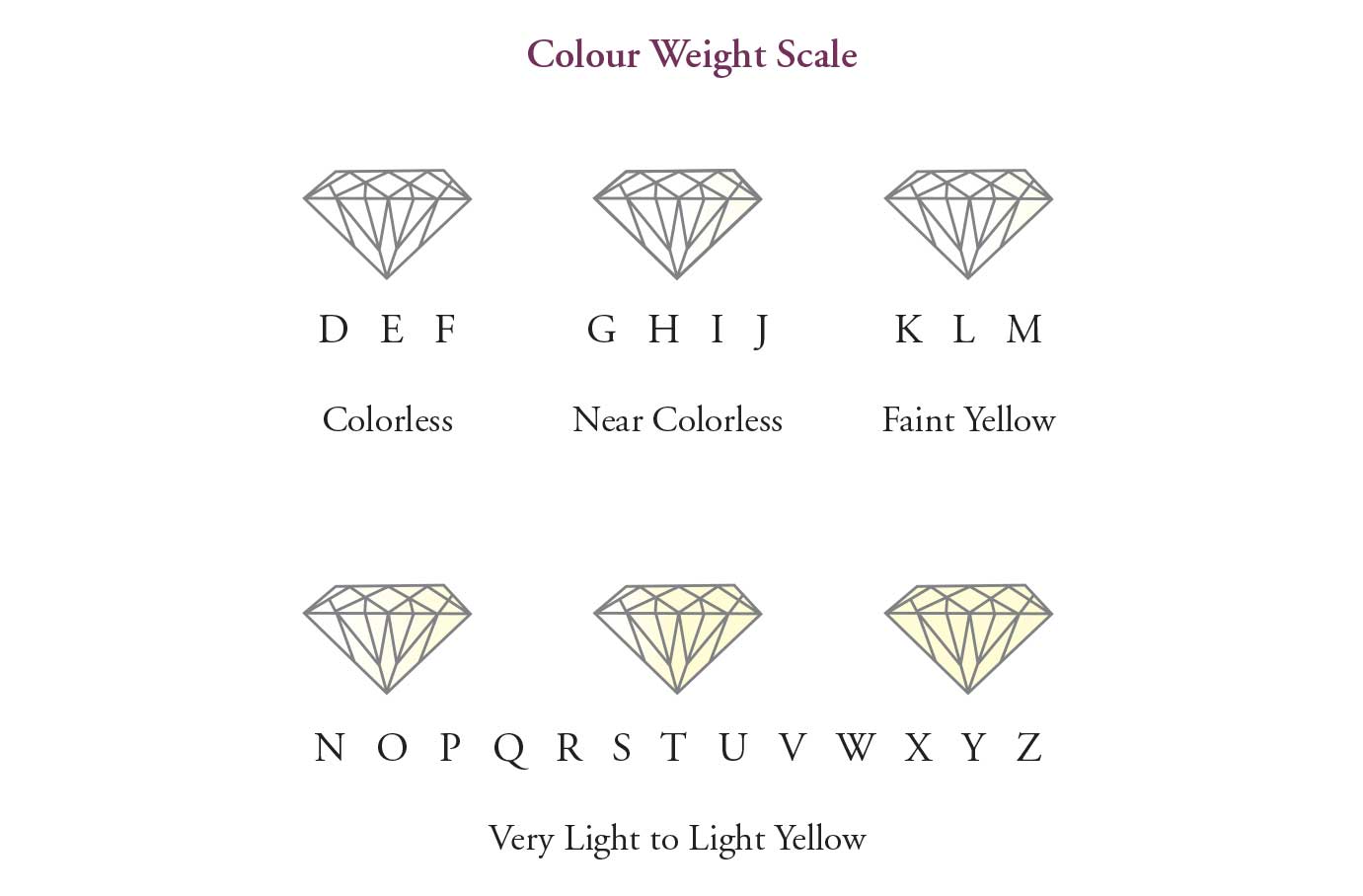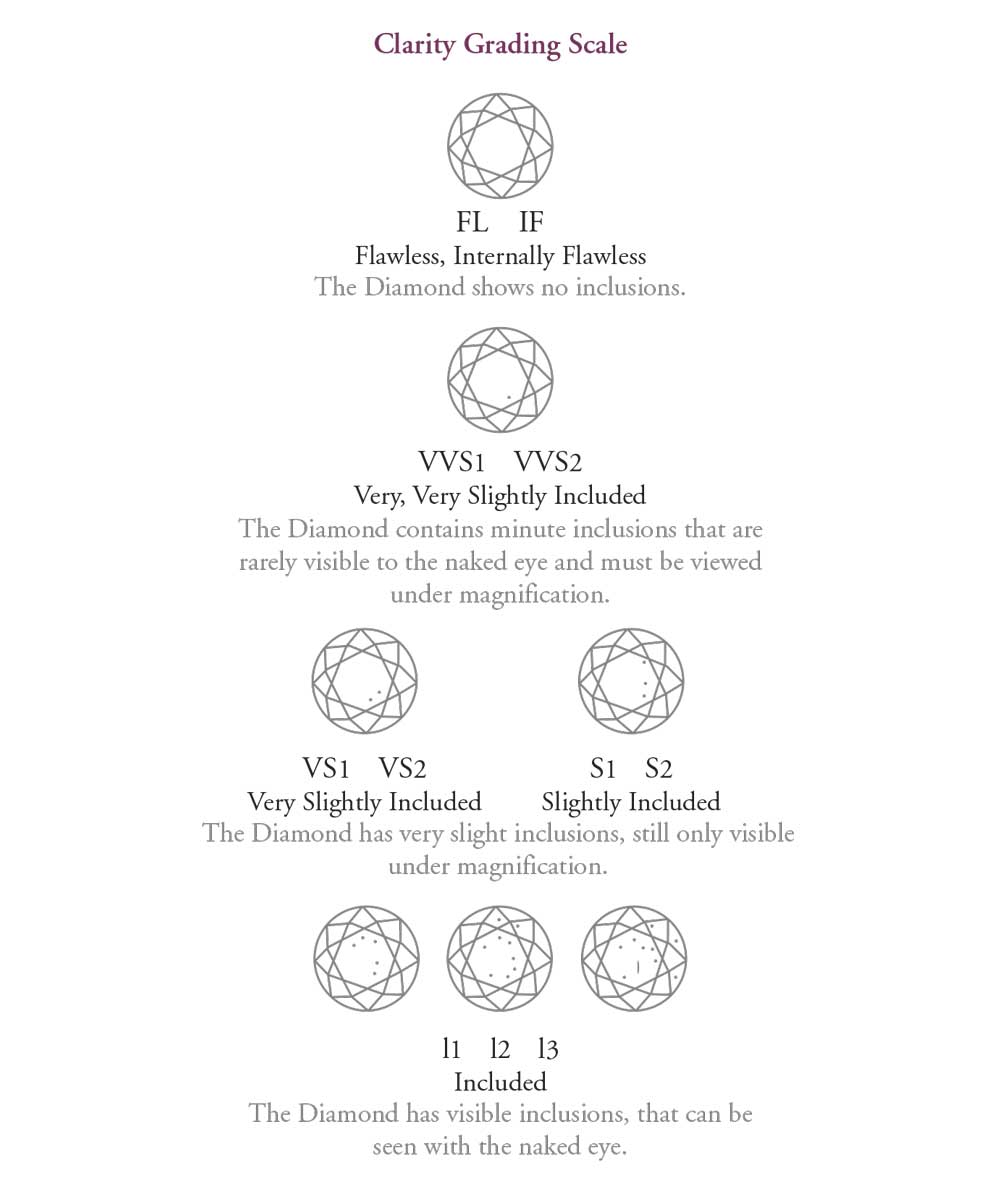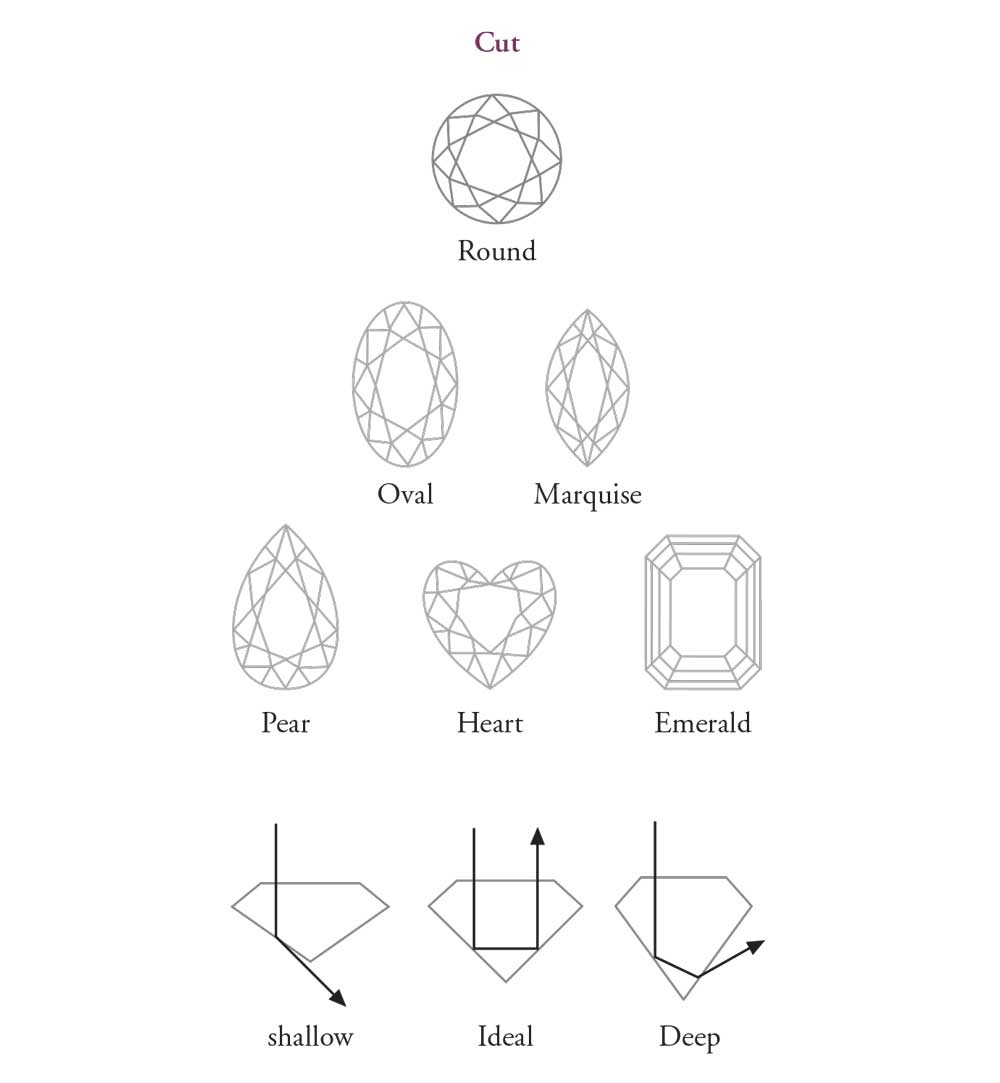Know Your Diamond
Out of hundreds of recognised gemstones in the world today, only the diamond is worthy for an engagement ring, the enduring symbol of love and commitment. A diamond is brilliant, returning more white light to the eye. It disperses fire and scintillates with reflected and refracted light. A diamond is rare and it endures, being the hardest natural substance on earth and the purest of all gemstones.
COLOUR
- Diamonds come in a range of natural colours, from totally colourless to yellow.
- The best diamond is colourless, becauseit acts as a prism, allowing light to pass effortlessly through and be transformed into rainbows of colour.
- Colour is a personal choice – choose your diamond based on how its subtle shade appeals to you
At Qasim Jewels, the colour of each diamond is determined by comparing it to authenticated “master diamonds”. Each stone is then colour-graded to a precise scale from “D” (colourless) to “Z” (saturated). Only diamonds with “H” colour or better are accepted. It should be noted that coloured diamonds are highly valued and have their own separate grading system.
Certain diamonds glow when exposed to UV light. Under certain lighting this fluorescence can mask the colour of a diamond and make it appear whiter. Qasim Jewels will not accept diamonds with strong fluorescence.
CLARITY
- Most diamonds contain very tiny inclusions (commonly called flaws) that make them unique.
- A diamond that is virtually free of interior or exterior inclusions is of the highest quality, for nothing interferes with the passage of light through it.
- A diamond’s clarity is determined by examination under 10-times magnification by a trained eye.
All gem-grade diamonds can receive a clarity rating based on an industry standard scale ranging from FL (flawless) to I3 (heavily included).Qasim Jewels’ stricter standardsfor clarity ensure that there are no rude surprises and our gemologists are always on alert for serious diamond imperfections:
- Of the 11 clarity grades, Qasim Jewels accepts only the top 6.
- any enhancements to the diamond including heat-treatment, colour adjustment or augmentation with foreign materials are totally unacceptable.
- Qasim Jewels diamonds are thoroughly inspected before and after being set.
Qasim Jewels automatically rejects the following diamond imperfections:
- Inclusions visible to the naked eye.
- Black inclusions.
- Chipped diamonds.
- Violation of the stone’s integrity by removing imperfections through drilling holes with a laser into the stone.
- Inclusions that break the surface of the stone that can result in a chipped or cracked stone.
- Milky clouds throughout the diamond crystal, producing a dull stone.
- Any diamond with significant surface or internal graining.
- Diamonds with knots (presence of another diamond crystal that violates the surface of the stone).
- Diamonds with unsightly naturals (unpolished part of the crystal surface).
CUT
Like harnessing a force of nature, the cut, or “make” of a diamond is what reveals its inherent beauty. It refers to the facet proportions on the surface of a diamond. More than any other factor, the precise positioning of these facets determines the beauty of the stone.
cut is not the shape of a diamond but the arrangement of a diamond’s facets
- Most diamonds are cut with 57 or 58 facets, depending on the absenceor presence of a culet, to maximise light return .
- A good cut has more scintillation, more sparkle.
- a well-cut diamond always looks brilliant no matter what setting it’s in.
There is a defined relationship between the table, the crown, the pavilion and the girdle. The facets on the crown (top) function as windows, collecting light into the heart of the stone. The facets on the pavilion (bottom) mirror the light back and forth in a frenzy until it bursts out through the crown in a fiery blaze
A word to the wise
An uninformed buyer can be easily deceived by an unscrupulous diamond cutter. Here are some tricks routinely found in the marketplace that we in Qasim Jewels do not practice:
- Carat weight – because it is always a factor in pricing, some diamond cutters create an excessively thick girdle to increase carat weight and price.
- Fool the eye – a diamond can be fashioned to create the illusion of a larger stone. However such stones exhibit diminished light behaviour.
- Fisheye – when a diamond is cut with a shallow pavilion and large table size, it produces a dull stone. It also creates an ugly “fisheye” effect when viewed through the crown.
- Nailhead – when the pavilion of a diamond is too deep, a darkening “nailhead” effect appears in the middle of the stone.
CARAT
- Weight of a diamond is measured in carats.
- One carat = 100 points = 0.2 grams.
- The heavier and larger the diamond, usually the more rare it is, for instance a two-carat diamond will be more than twice as valuable as a one-carat stone.
CERTIFICATION
- A diamond certificate represents independent verification of the stone’s quality.
- it is issued by agencies employing highly trained gemologists to provide an unbiased and accurate evaluation.
- each stone is scrutinised to analyse its dimensions, clarity, cut, colour, finish, symmetry and other details.
CRAFTMANSHIP
At Qasim Jewels, we also pay extra attention to another important C – Craftsmanship. Each piece of our unique setting is individually customised to accommodate the specific size and shape of the diamond. A Qasim Jewels diamond ring is created by jewelers who have unparalleled skill, patience and discipline. At every step of the crafting process the ring is fully inspected.





